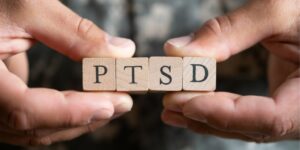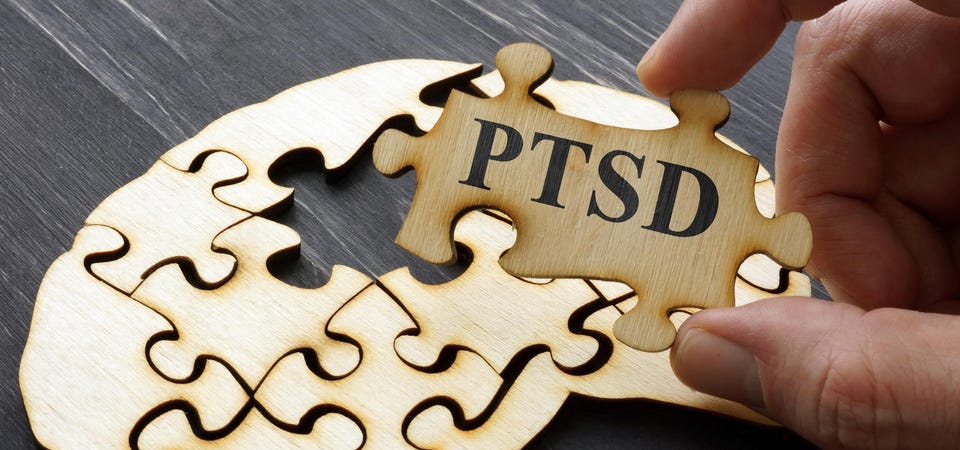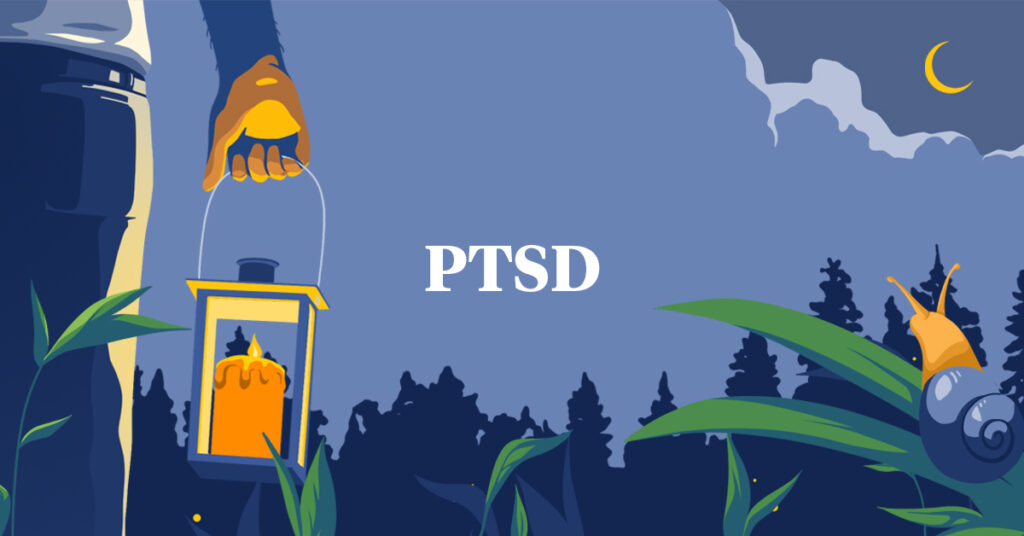Posttraumatic stress disorder (PTSD) is a mental health condition that can develop after exposure to a traumatic event. According to the National Center for PTSD, about 7 or 8 out of every 100 people will experience PTSD at some point in their lives. Symptoms of PTSD can be very disruptive and impairing, making it difficult for people with the condition to live normal lives. In this blog post, we will discuss the different types of PTSD, as well as common symptoms and treatment options.
Contents
What Is PTSD?
 PTSD is a disorder that can develop after a person is exposed to a shocking, scary, or dangerous event. It is natural to feel afraid during and after a traumatic situation. Fear triggers many split-second changes in the body to help defend against danger or to avoid it. This “fight-or-flight” response is a healthy reaction meant to protect a person from harm. But sometimes, this response is too strong or lasts too long, which can lead to PTSD.
PTSD is a disorder that can develop after a person is exposed to a shocking, scary, or dangerous event. It is natural to feel afraid during and after a traumatic situation. Fear triggers many split-second changes in the body to help defend against danger or to avoid it. This “fight-or-flight” response is a healthy reaction meant to protect a person from harm. But sometimes, this response is too strong or lasts too long, which can lead to PTSD.
PTSD was first brought to public attention by war veterans, but it can result from any number of traumatic events, such as:
- Serious accidents
- Natural disasters
- Terrorist attacks
- Violent personal assaults, such as rape or mugging
- Being held captive
- Childbirth
- Diagnosis of a life-threatening illness
Types of PTSD

PTSD is a mental health condition that’s triggered by a terrifying event — either experiencing it or witnessing it. Symptoms may include flashbacks, nightmares, and severe anxiety, as well as uncontrollable thoughts about the event.
PTSD can occur in anyone, including children and adolescents. However, women are more likely to develop PTSD than men. People who have experienced trauma in childhood or who have other mental health conditions such as depression or anxiety are also at increased risk.
Some of these types of PTSD are:
Normal Stress Response
The normal stress response is your body’s way of protecting you. When you’re in danger, your body releases a flood of hormones that increase your strength and reaction time. This “fight-or-flight” response is a healthy reaction meant to protect you from harm. But it can also be triggered by less dangerous events, such as an upcoming work presentation or taking a difficult exam.
In most cases, the stress response goes away once the threat has passed. But for some people, the anxiety and other symptoms don’t go away and can get worse over time. These people may have PTSD. This type of PTSD is also known as an acute stress disorder or ASD.
ASD usually starts within three months of the traumatic event and lasts no longer than six months. But for some people, the symptoms may last longer and become chronic, or long-lasting.
Chronic PTSD
Chronic PTSD is a condition that can develop after you’ve been exposed to multiple traumas, such as combat experiences or sexual assault. It can also occur in response to a single event if it’s especially severe or if you’re exposed to it over a long period, such as with domestic violence or child abuse.
PTSD can cause a variety of physical and emotional symptoms that make it hard to continue with your daily activities. You may feel stressed and on edge most of the time. Also, You may be easily irritated or angered. You may have difficulty sleeping or concentrating. And you may feel like you’re always on guard as if danger is lurking around every corner.
If you have chronic PTSD, you may also experience flashbacks and intrusive thoughts about the traumatic event or events. These can be so vivid and intense that they seem real, even though they’re not happening in the present moment. You may also have nightmares about the trauma.
Complex PTSD

Complex PTSD (C-PTSD) is a type of PTSD that can occur when someone has experienced long-term or repeated trauma, such as child abuse, sexual assault, or domestic violence. C-PTSD is also sometimes called a “disorder of extreme stress not otherwise specified” (DESNOS). C-PTSD symptoms can include:
- flashbacks and intrusive memories
- nightmares
- difficulty concentrating
- feeling detached from others
- feeling hopelessness and despair
- being easily startled or angered
Also, C-PTSD treatment often includes talk therapy, medication, and self-care. If you think you might have C-PTSD, it’s important to see a mental health professional who can give you an accurate diagnosis and create a treatment plan that’s right for you.
The term “complex PTSD” was first used in the early 1990s to describe the symptoms of long-term trauma survivors. However, the concept of C-PTSD is not new. It’s similar to a condition that was first described in the 1970s called “disorder of extreme stress not otherwise specified” (DESNOS). DESNOS was used to describe symptoms that were common among Vietnam War veterans, prisoners of war, and Holocaust survivors.
Disassociative PTSD
Disassociative PTSD is a type of PTSD in which the person experiences dissociation, or a feeling of disconnection from oneself or the world around them. Symptoms of disassociative PTSD may include dissociative amnesia, depersonalization, derealization, and Dissociative Fugue.
The history of dissociative disorders is long and complex. Early descriptions of dissociative symptoms date back to the time of Hippocrates, but the concept of “dissociation” was not formally introduced into psychiatry until the late 19th century.
Dissociative disorders were first included in the Diagnostic and Statistical Manual of Mental Disorders (DSM) in 1980. The most recent edition of the DSM, DSM-V, includes three specific types of dissociative disorders: Dissociative Amnesia, Depersonalization/Derealization Disorder, and Dissociative Identity Disorder.
Common Signs of Types of PTSD

There are many common signs of the different types of PTSD. They can be broadly divided into four categories:
Intrusive memories
These are involuntary, intrusive thoughts or images that come to mind without warning and are often related to the traumatic event. They can take the form of flashbacks, which are vivid re-experiences of the trauma as if it is happening in the present. Flashbacks may also occur in dreams or when you are triggered by something that reminds you of the original trauma.-
Avoidance
This refers to both avoiding people and places that remind you of the trauma, as well as numbing your emotions and withdrawing from activities you once enjoyed. You may find yourself feeling detached from others, experiencing a loss of interest in things you used to enjoy, or feeling emotionally flat.
Negative changes in thinking and mood
After a traumatic event, it is common to have negative thoughts about yourself, the world, and other people. You may feel like you will never be able to trust anyone again or that the world is completely dangerous. You may also feel guilty or ashamed for things you did or didn’t do during the event. It’s also common to develop depression, anxiety, or substance abuse problems after experiencing trauma.
Changes in physical and emotional reactions
It’s not uncommon to experience changes in your physical and emotional reactions after a traumatic event. You may startle more easily, have trouble sleeping, or suffer from headaches or nausea. You may also find yourself feeling on edge, irritable, or having outbursts of anger. This also includes the development of post-traumatic stress disorder, which is a specific type of PTSD that can occur after someone experiences or witnesses a life-threatening event.
Constant thoughts about the event
You may find yourself fixated on the traumatic event and replaying it over and over in your mind. This can make it hard to concentrate or focus on anything else. You may also avoid anything that reminds you of the event, which can make it difficult to talk about what happened.
Nightmares
Many people with PTSD experience nightmares or sleep problems. You may have trouble falling asleep or staying asleep, or you may have nightmares in which you relive the trauma. These nightmares can be so vivid and realistic that you wake up feeling scared or panicked.
Common Treatment Methods For Types of PTSD

Treating PTSD can be a long and difficult process, but many effective methods can help. The most important thing is to seek professional help as soon as possible. Here are some common treatment methods for PTSD:
Cognitive Behavioral Therapy (CBT): CBT is a type of therapy that helps people understand and change their negative thoughts and behaviors. This can be an effective treatment for PTSD because it helps people learn new ways of coping with their trauma.
Exposure Therapy: Exposure therapy involves gradually exposing yourself to your fear or trigger in a safe environment. This can help you become less afraid of your trauma and help you to better cope with it.
Eye Movement Desensitization and Reprocessing (EMDR): EMDR is a type of therapy that uses eye movements to help people process and heal from their trauma. This can be an effective treatment for PTSD because it helps people to reprocess their trauma in a new way.
Medication: Medication can be used to help with the symptoms of PTSD, such as anxiety, depression, and insomnia. Medication can also help to improve your overall mental health. Some of these medications are selective serotonin reuptake inhibitors (SSRIs), tricyclic antidepressants (TCAs), and monoamine oxidase inhibitors MAOIs).
Support Groups: Support groups can be a great way to with others who have been through similar experiences. This can help you feel less alone and allow you to share your story. Sometimes support groups also offer education and information about PTSD.
Self-Care: Another important part of treating PTSD is taking care of yourself. This includes things like getting enough sleep, eating a healthy diet, and exercising. It’s also important to find ways to relax and reduce your stress levels. Some people find that yoga, meditation, or aromatherapy can be helpful.
Conclusion
PTSD is a serious condition that can have a major impact on your life. However, treatment is available and can be very effective. If you think you might have PTSD, talk to your doctor or mental health professional.
There are many types of PTSD, but each one shares certain symptoms. These can include reliving the event through flashbacks or nightmares, avoiding anything that reminds you of the trauma, feeling numb and disconnected from others, and feeling constantly on edge. Treatment for PTSD often includes therapy and medication. With treatment, people with PTSD can improve their symptoms and live full lives.
Hope this article was of help to you! If you are suffering from PTSD, you may seek help from Therapy Mantra. We have a team of highly trained and experienced therapists who can provide you with the tools and skills necessary for overcoming PTSD. Contact us today to schedule an online therapy or download our free Android or iOS app for more information.


